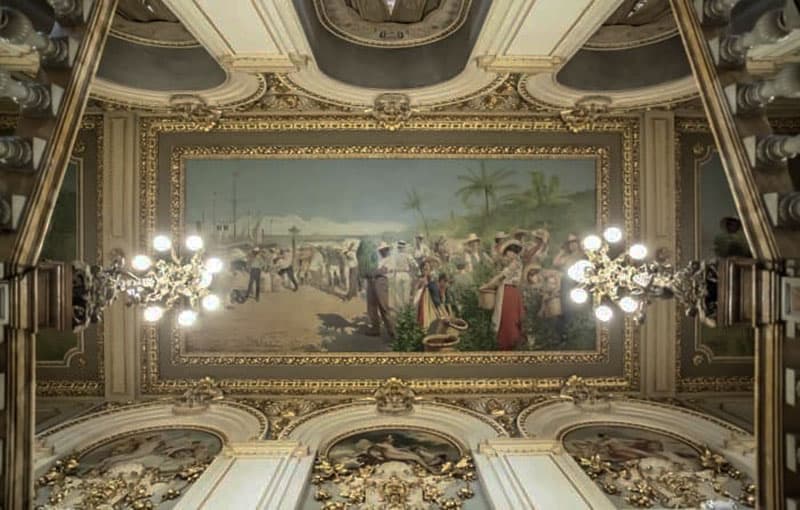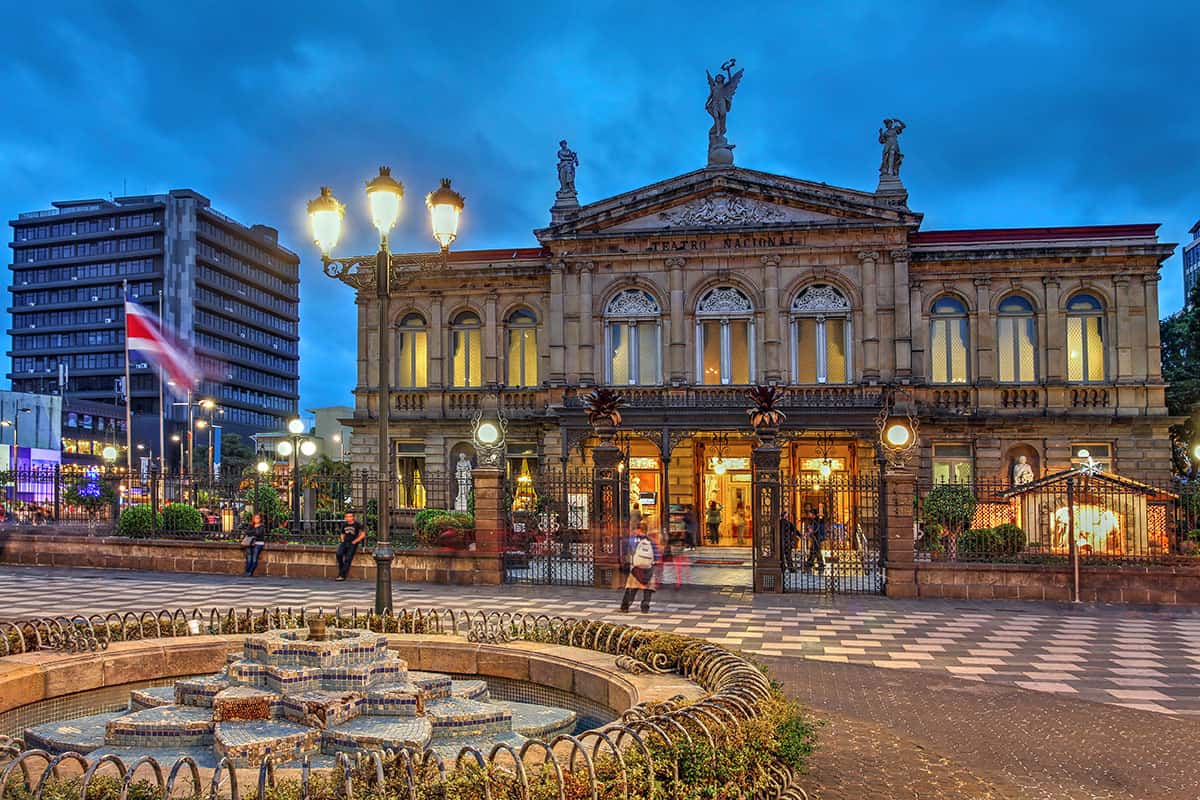The National Theatre of Costa Rica is a historical site that was built between the years 1891 and 1897. It is one of the finest historical buildings in Costa Rica and a landmark located in the capital of San Jose. It was modeled after the Palais Garnier in Paris, France.
Some of the best ways to understand the culture and history of Costa Rica is to visit its places where they are most prevalent. Places like its, monuments, churches, or even ancient ruins are good places to start. Another place where you can immerse yourself in Costa Rica culture is its National Theater.
I will be talking about it today and describing its interior and exterior as well as its history, construction and the events that take place there. So, lets get started!
Visiting the National Theater of Costa Rica
The National Theatre of Costa Rica has an exquisite neo-classical exterior that was heavily based on the famous Palais Garnier in Paris, France. The theater exterior itself features the statues of the famous Spanish writer, Calderon de la Barca and the famous German composer, Ludwig von Beethoven.
There are several statues and monuments alongside the exterior walkway leading into the building as well.
The National Theater’s interior is nothing to be overlooked either, especially the murals painted on the building’s main ceiling. In fact, an article from USA Today has praised the National Theater’s interior as having one of the 10 greatest ceilings in the world.
The mural itself was painted by the Italian artist Aleardo Villa is titled “Alegoría al Café y al Banano” or the Allegory of Coffee and Banana. It is a nod to the era in which the building itself was constructed, which was when the coffee and banana industry of Costa Rica were at its peak.
The mural depicted rural life in Costa Rica at the turn of the 20th century, including farmers harvesting bananas and processing coffee. Aleardo Villa, the artist commissioned for the painting, has not actually visited Costa Rica, so there are some minor inaccuracies in the painting itself.
For example, the farmers depicted in the painting are cradling the bananas with both their arms, when it was traditionally carried over their shoulders.
The interior itself is also decorated with lavish furniture, with its vestibule floor being inlaid with Carrara marble trimmed with bronze and 22.5 carat gold overlay.
Statues made by the Italian sculptor Pietro Bulgarelli watch over the guests as they enter through the lobby, with ornately-colored chandeliers hanging from the ceiling. Aside from the auditorium where the performances are played out, the first floor of the National Theater also features a gift shop and a café.
History and Construction of the National Theatre

The National Theater of Costa Rica began construction in 1891, back when the population of San Jose numbered no more than 18,000. It was constructed as a stop for the worldwide opera circuit that was quite popular back in the day. The construction was financed by an export tax of coffee, which was the primary export product of Costa Rica at the time.
The city of San Jose already had its own theater at the time, which was the Teatro Mora, also known as the Municipal Theater. It was not as opulent or as exquisite as the National Theater but proved to be its only real competition in Costa Rica.
The Teatro Mora was later destroyed in an earthquake, and the National Theater would become the only major opera theater in the capital for a good long while.The National Theater itself had multiple issues with its construction during the early stages, but an Italian engineer commissioned for the project later corrected these mistakes.
Construction would go smoothly until the National Theater was opened to the public on the 21st of October 1897. The opening performance was Johann Wolfgang von Goethe’s Faust.
Performances at the National Theatre
The National Theater is still quite active today, hosting performances by the National Symphonic Orchestra several times a week. The theater also hosts a number of shows such as ballet, operas, plays and other theatrical performances, all of which are by both local and foreign artists, dancers and composers.
Tourists can visit Mondays to Fridays from 8:00 AM to 5:00 PM as part of the guided tours offered there. The performances usually require admission fees, but at around lunchtime and on Thursdays at 5:00 PM, there are free musical performances offered to the public that you can enjoy.






